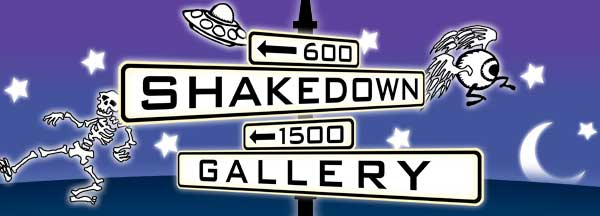 Fifty years ago today, novelist Ken Kesey and a handful of his Stanford classmates and Palo Alto neighbors took a converted 1939 International Harvester school bus and turned it into a sprawling canvas and the prototypical psychedelic vessel. The name of their vehicle was, alternately, spelled Furthur or Further, depending on which source you referenced, and it was both a destination and a state of mind.
Fifty years ago today, novelist Ken Kesey and a handful of his Stanford classmates and Palo Alto neighbors took a converted 1939 International Harvester school bus and turned it into a sprawling canvas and the prototypical psychedelic vessel. The name of their vehicle was, alternately, spelled Furthur or Further, depending on which source you referenced, and it was both a destination and a state of mind.
"What we hoped was that we could stop the coming end of the world." Ken Kesey later proclaimed, and he was only half joking.
In 1963, in the midst of the Cold War, Ken Kesey and his family and friends were in New York for the debut of the Broadway stage production of his bestselling novel One Flew Over the Cuckoo's Nest. The novel was a massive commercial success and also the recipient of numerous positive reviews. While in New York, they visited the site of the planned 1964 World's Fair. The contrast between Cold War terror and New World optimism was stark.
On the way home from the play he and his friend George Walker heard the news of the assassination of John F. Kennedy over the radio. Their road trip from New York to Oregon was extensive and with every mile they saw the pain and confusion of a nation mourning the death of the president. “Everyone felt the same pain,” he said.
The experience moved him so greatly that the following year, when it came time for Ken to go back east for the publication party celebrating the release of his second novel, Sometimes A Great Notion, Ken opted to take another road trip, but this time, with a very different slant on the landscape.
While the Ken Kesey that the public knew in 1963 was a promising Stanford scholarship recipient, he was also one of the volunteers at a Menlo Park psychiatric hospital where he was being paid by scientists on the dole from a government funded spy program called MK ULTRA or Mind Kontrol ULTRA, to take a variety of mind altering substances, most prominently, an experimental drug called lysergic acid diethylamide.
Fueled by neurons blasted with LSD young Kesey spent tens of thousands of 1964 dollars assembling a madhouse collection of film and sound equipment and loaded it all onto the freshly painted bus to record what he hoped would be the world's first "cinema novel": documenting the state of the nation In The Moment as a form of Living Theater or Life As Art. Cast in the role of the central star of the show, he had Neal Cassady, a local hero on the San Francisco Beat poetry circuit, best known as the protagonist in author Jack Kerouac's best selling On the Road, take the wheel of the bus and turn the road trip into Intergalactic Odyssey.
The trip has been immortalized for years, perhaps most prominently by author Tom Wolfe in The Electric Kool-Aid Acid Test, and also by a folk-jug band turned psychedelic rock stadium legend, The Grateful Dead, in their song "(That's It For) The Other One".
"The bus came by and I got on. That's when it all began.
There was Cowboy Neal at the wheel of the bus to Never Never Land."
The mayhem that grew out of that road trip became the stuff of legend. But beyond the nuttiness, there was an intention to create an artistic revolution, one Ken Kesey called The Neon Renaissance. Kesey's Neon Renaissance lives on and psychedelic art and culture have permeated every facet of society. Television commercials for Starburst candy are now more psychedelic than any video or light show performed by bands with names like The Strawberry Alarm Clock.
Did it matter? Does it now? In the end, perhaps it is the art that endures. As Kesey once told me in a 1993 interview, "The bus trip... 60,000 books every season and there's one of those and that communicates something that can't be bottled and sold so people don't think of it as valuable."

 Fifty years ago today, novelist Ken Kesey and a handful of his Stanford classmates and Palo Alto neighbors took a converted 1939 International Harvester school bus and turned it into a sprawling canvas and the prototypical psychedelic vessel. The name of their vehicle was, alternately, spelled Furthur or Further, depending on which source you referenced, and it was both a destination and a state of mind.
Fifty years ago today, novelist Ken Kesey and a handful of his Stanford classmates and Palo Alto neighbors took a converted 1939 International Harvester school bus and turned it into a sprawling canvas and the prototypical psychedelic vessel. The name of their vehicle was, alternately, spelled Furthur or Further, depending on which source you referenced, and it was both a destination and a state of mind. 